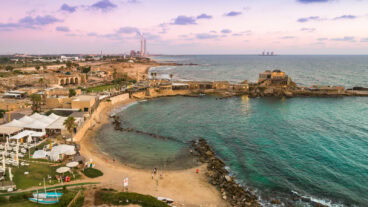If you find yourself at Jerusalem’s Machane Yehuda market (shuk), it would be hard not to notice the massive crowds surrounding the many stands doling out piping hot plates of fresh knafeh to large tour groups and locals alike.
As trends in the shuk tend to come and go, this relatively new phenomenon has gone beyond a trend to an established fixture with no end in sight.
Knafeh is a traditional Middle Eastern dessert made with kadayif, a spun pastry, layered with brined cheese or clotted cream and topped with warm sugar water and crushed pistachios.
Its roots can be traced back to the Levant and Turkey, leaving some room for interpretation of this simple sweet dessert.
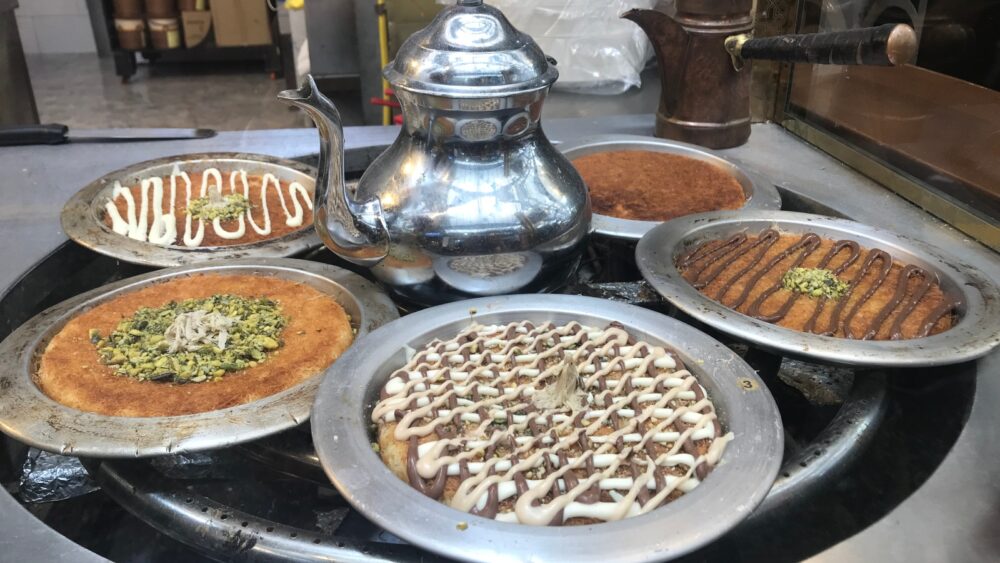
Travelers and Israelis have long enjoyed knafeh in Arab establishments, often served alongside desserts like baklava and other syrupy sweet treats.
However, for those keeping kosher, this dessert has been mostly off-limits until 2017 when the first knafeh shop, Ir David (City of David), opened in the shuk and almost instantly gained a cult following that inspired others to open their own knafeh joints.
There’s even a stand called Knaf that serves a savory meat version, swapping out cheese for seasoned beef or asado.
The shuk has seen its fair share of fads and trends that came and went, including churros, bubble waffles and dive bars. How did knafeh beat the odds? And why is this trend showing no signs of letting up?
While many attribute this popularity to people’s craving to satisfy their sweet tooth, Jerusalem-based tour guide Joel Haber suggests that knafeh symbolizes a “post-conflict mindset.’’
He sees the embrace of this sweet treat as a collective behavioral response to being tired of the ongoing regional conflict.
While all these places listed below serve up a similar product, they all have unique twists and stories that set them apart from each other.
Ir David/City of David Knafeh
Ir David was the first place in the shuk to feature this cheesy dessert.
The establishment is owned by the Moreno family, famed for their nuts and snacks in the shuk as well as throughout Jerusalem. Since opening Ir David in 2017, they have drawn massive crowds of tourists and locals alike.
Efrat, a 20-something Jerusalemite, has been working at Ir David for about a year and a half. She attributes knafeh’s popularity to its sweetness and simplicity and to Ir David’s social-media presence. With over 6,300 followers on Instagram, this place is creating a big buzz among Israelis.
View this post on Instagram
Ir David offers toppings such as crushed pecans, toasted coconut, marshmallows, cookies and candy pieces, plus a selection of sauces — chocolate, Nutella, tahina and caramel, as well as a dollop of soft-serve ice cream on the side.
For Jewish clientele who finally have a chance to enjoy the kosher version of this traditional dessert, Ir David provides an appealing balance of exotic and familiar.
Knafe Jerusalem
A few stalls down stands Knafe Jerusalem. Oshri, the owner, explained that opening this place had less to do with keeping up with the trend and more to do with divine intervention.
Pointing to the sky, Oshri claims that it was meant to be, and eagerly explains that his knafeh is the best in the shuk. While he did not give the recipe, he said it’s all about quality ingredients.
He notes his knafeh is made with real butter and semi-salty sheep’s milk Bryndza cheese, and a family recipe for the syrup. The kadayif is not dyed orange as in some establishments. And while the crowds love their toppings, his “classic” is the most popular and comes topped with pistachios and toasted shaved coconut, drizzled with tahina with a side of soft-serve ice cream.
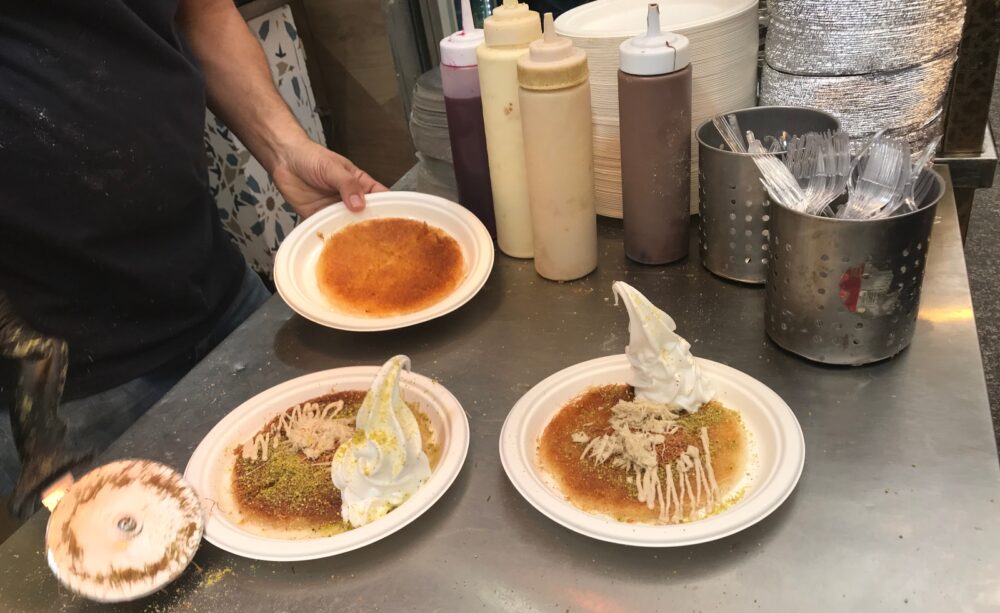
BaklaWish
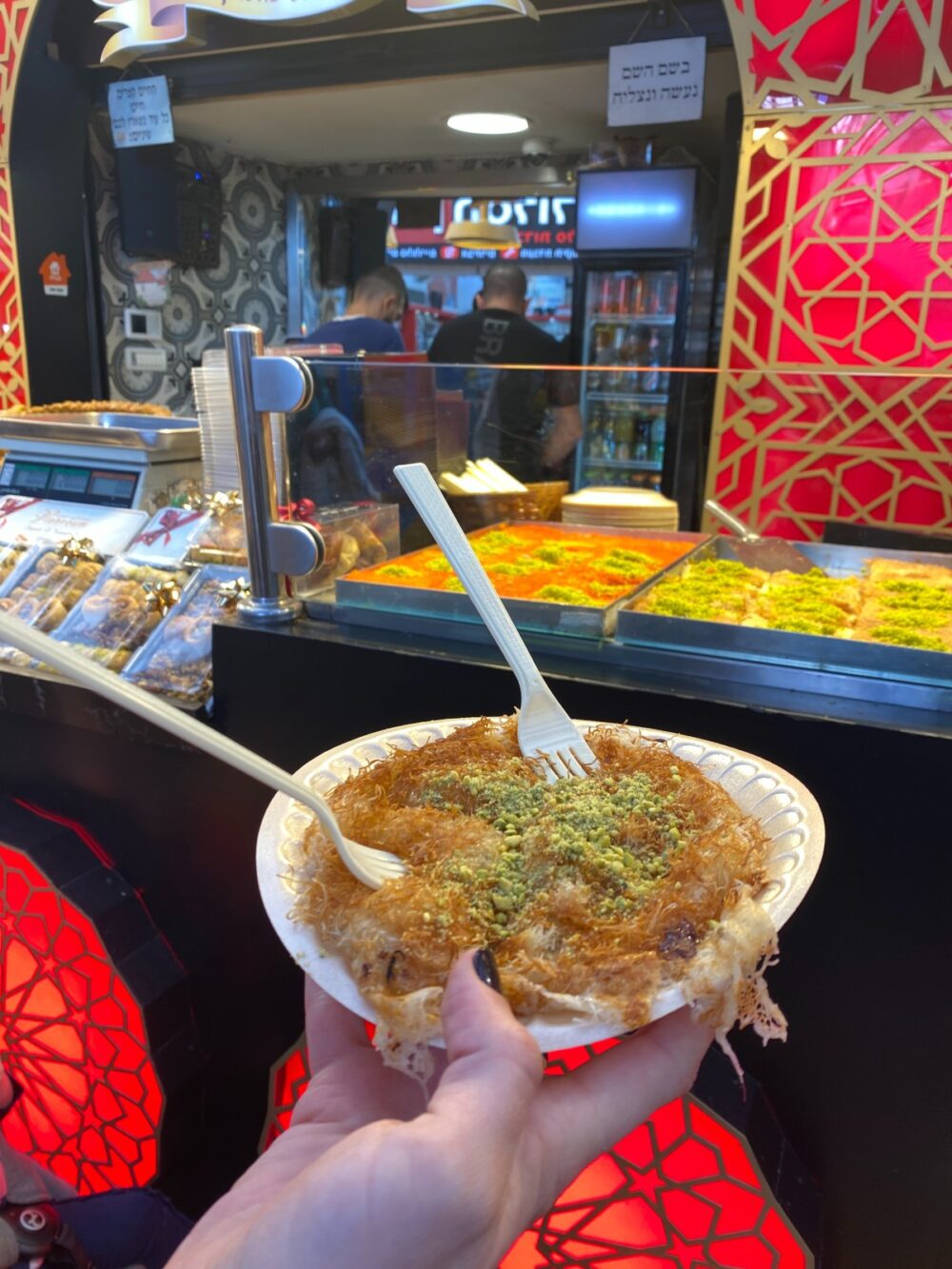
Walk a few meters down and you reach BaklaWish. This baklava stand has been operating since 2018 and as the name suggests, it is mainly known for its baklava. Yosef, the owner, shares that adding kanafeh to the menu didn’t hurt their business. By using a sweet cow’s milk cheese and providing customers with a variety of toppings and ice cream, they can satisfy this growing hunger for knafeh.
Knafeh Al Halabi
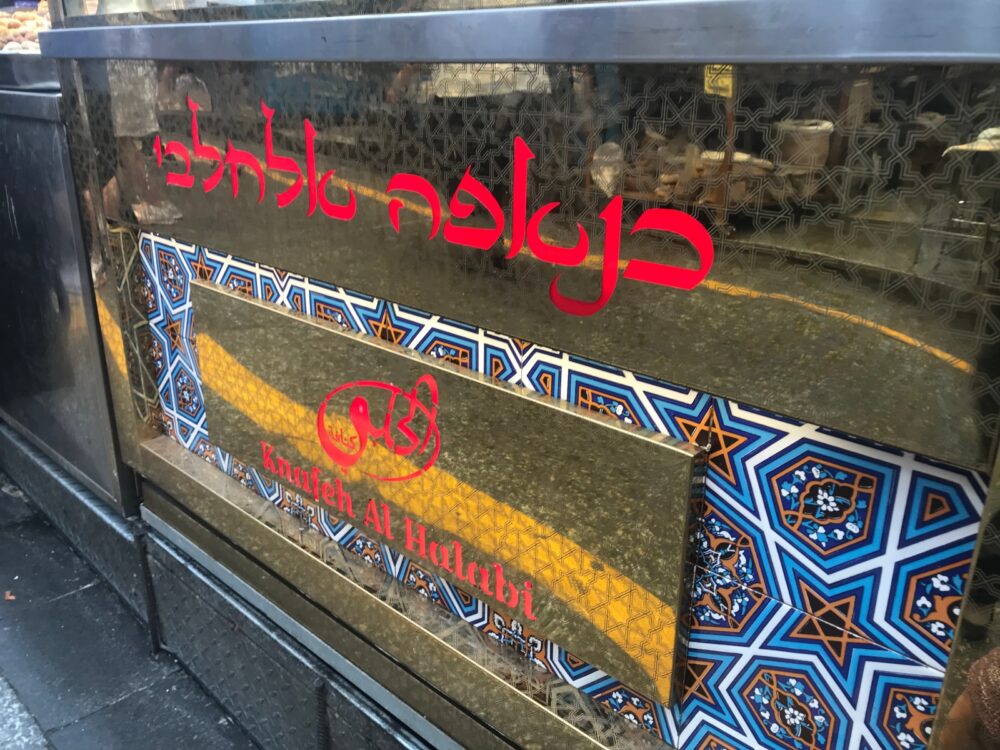
Knafeh Al Halabi is a sweet shop specializing in Syrian-style desserts including several versions of knafeh, a vegan option, and a variety of baklava.
In keeping up with this trend, they have also included a similar version of the popular knafeh found in the nearby establishments complete with toppings and ice cream.
Yakir, an employee, attributes knafeh’s ongoing popularity to representing the “atmosphere of the shuk” for Israelis and foreign tourists.
Café Turki
A few stalls down from Al Halabi is Cafe Turki. A relatively new addition to the shuk, this authentic Turkish spot offers up Turkish “water” cheese borekas, as well as Turkish delight, tea and coffee.
Sam, the owner, is a new immigrant hailing from Istanbul and is proud to share his local cuisine in the shuk. He recently added knafeh to his limited menu due to the popularity of the knafeh places literally surrounding his stand.
“Knafeh is Turkish and we make ours in the Turkish style,” he tells ISRAEL21c. “We use real high-quality butter and this is what sets ours apart from the other establishments.”
Sam also points out that he offers ice cream directly from Turkey — vanilla or vanilla and pistachio — once again highlighting the authenticity of his product.
As more tourists continue to fill up the shuk, this trend sees no sign of letting up. While there does seem to exist a friendly competition between knafeh stands, each appears to be reaping the benefits of this sweet treat that is simple and quick to make and exotic and tasty to customers.







